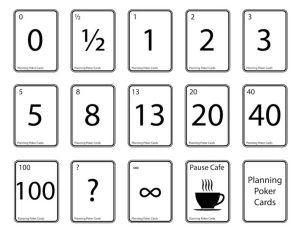How to fight burnout at work

According to statistics, the majority of dismissals in modern companies are due to emotional burnout. More than 76% of employees have experienced this unpleasant condition at least once in their lives. It develops gradually, accompanied by anxiety, fatigue, desolation, apathy, sleep and wakefulness disorders. A person can not work normally, ceases to enjoy life, his very existence seems dull and meaningless. Once favorite work does not please, colleagues cause only anger and irritation. Further ignoring of these symptoms leads to decreased productivity, problems at work, loss of career and development of prolonged depression.
As of 2019, this syndrome is officially included in the registry of health-impacting conditions. That is, it carries a real danger. From burnout can not get rid of simply “taking yourself in hand”. To prevent serious problems in life, at work, it is important to know how to fight burnout. In this article we will tell you how to recognize this syndrome, how to distinguish it from fatigue, how to fight burnout at work. We will understand how it can be prevented or avoided.
What constitutes emotional burnout

Mark works 10-12 hours a day, has not been on vacation for a long time, and works practically without days off. His career is going well: he is a sought-after specialist, leading several important projects at the same time, with an excellent salary and good prospects for the future. Those around him admire his willpower and collectedness. And he is quite pleased with himself. Fatigue, of course, accumulates, but there is no time to rest. He does not spend time with friends and relatives, he simply does not have time for it, he does not sleep much. There is another training in the plans, and he also wants to somehow fit it into his busy schedule. It seems that it is not so difficult to live in such a rhythm. But it is, up to a certain point.
One day Mark notices that he is finding it increasingly difficult to work due to severe fatigue. He has serious health problems, and his interesting, well-paid job does not bring the same satisfaction. If left as it is, this condition will eventually turn into depression, Mark will abandon his favorite business, to which he has devoted so much time. This situation is faced by a great number of people.
In psychology, this condition is associated with emotional and physical exhaustion that develops against the background of chronic stress. It is neither a disease nor a mental disorder. It is a risk factor affecting the general condition of a person. This term was introduced by an American psychologist, Herbert Freudenberger, in the 70s of the last century. Initially, it was used to describe the psychological problems of representatives of professions related to people: teachers, psychologists, social workers, doctors. Over time, it became clear that anyone can face such a phenomenon: from a large businessman, IT developer to a housewife or student.
Burnout is also caused by such factors as monotonous, monotonous work, lack of support, inconsistency of salary with the volume of tasks performed. It develops gradually, in several stages:
Stages of emotional burnout
- You work a lot, demand high results from yourself and others, this leads to fatigue, inner tension.
- The state of tension is aggravated by irritation, anger due to mismatches between expectations and reality. It becomes more difficult to work, and you have trouble sleeping and controlling your emotions. You go to extremes, going even deeper into work or procrastinating for days on end.
- Exhaustion occurs as a result of chronic fatigue. You do not feel any emotions from joyful or sad events in life, you lose interest in work. You get sick more often, work at the limit of your strength, without the same performance and quality. This leads to further loss of motivation and low self-esteem.
There are many symptoms of burnout. Everyone manifests this condition in their own way. To simplify identification, its signs are divided into the following groups:
| Physical | Behavioral | Psychological | Social | Intelligent |
| A feeling of shortness of breath, shortness of breath, fatigue, trembling of the limbs, sleep disturbances, changes in blood pressure in a greater or lesser direction, burning sensation in the chest, palpitations. | Development of workaholism, lack of appetite, decreased activity, progression of negative habits (alcohol consumption, smoking, gambling addiction). | Anxiety, increased irritability, apathy or aggression towards others. | Restriction in communication, decrease in social activity, problems in communication with relatives, friends, colleagues at work. | Decreased concentration and attention, indifference to new ideas, deterioration of logical thinking. |
Types of burnout
Depending on the causes leading to the development of this condition and the severity of its course, three types of burnout are distinguished:
- The first type is due to the tension that comes with the anticipation of a soon-to-be important event. For example, moving to a new position, an exam or the birth of a child. Not understanding how to work with it further leads to panic. There is a feeling that the forces are running out. But as soon as the situation is resolved: the exam is successfully passed, everything is perfect at work, life returns to its former course.
- The second form of burnout is connected with monotonous, never ending work, routine, which can be compared to unloading an endless truck with goods. At some point a person even gets involved in the process, it seems to him that it is only necessary to push a little and everything will be over. But then a representative of the management appears and says: “You’re not working well, unload better.” This leads to an increase in internal tension.
- The third variant is otherwise known as pseudo-burnout. In such a situation, a person seems to have this syndrome, but in fact he or she is simply tired or disappointed in the profession. After receiving a portion of support from teammates and loved ones, he or she can again successfully continue working.
How to deal with the syndrome: practical advice
There are a lot of practical tips and lifehacks on how to avoid burnout. First of all, you need to organize your work and leisure properly, not to chase an unattainable ideal, not to try to do everything possible to please others. To get out of this state in the early stages try the following methods:
- Build an adequate work schedule, clearly distinguishing between working and free time. Solve all serious professional issues at work.
- Get enough sleep, eat right, find time for hobbies and hobbies. Spend your personal time on yourself, not on others.
- Set proper and realistic goals for yourself, learn how to handle your most valuable resource – time. Structure and organize your life with the help of time management techniques.
- Encourage, pamper yourself from time to time. Celebrate your achievements in life and at work.
- Control and analyze your emotions. Keep a special diary to help you understand yourself better. Write down in it the situations that excite you, thoughts and worries related to them. Make appropriate conclusions, look for connections to influence your emotional background.
- Be self-confident, adequately treat your shortcomings, do not engage in self-obsession.
- Don’t let yourself be used, rebuild your relationships with those around you. Leave all conflicting relationships for a while. You will have the opportunity to return to them. Get rid of irritating content, “information noise”.
- If you are unable to cope with the problem on your own, contact a professional psychologist. He or she will give recommendations and make an optimal recovery plan depending on your condition.
You can also use any creative activity to achieve a therapeutic effect. For example, painting pictures by numbers, dancing or singing in a vocal studio. Any change of routine has an encouraging effect on the brain, helping it to take a break from its usual routine. Another great way to combat burnout: traveling. You don’t have to go to an expensive overseas resort. An ordinary outing to the nature with friends, a trip to the nearest green zone will be more than enough.
The original method of combating burnout for women is described in the book by Emily and Amelia Nagoski. Having studied in detail the peculiarities of the syndrome development in women, they proposed to get rid of the stress factor with the help of tears. Tearful melodramas are suitable as a tool for such treatment. With tears the ladies will get rid of all the accumulated negativity.
You can use a simple “ER” exercise to reboot:
Make two lists:
- In the first, specify several ways to recharge quickly (10-15 minutes);
- The second includes longer relaxation options (40 minutes or more).
Do one short and one long action once a week, scheduling them as tasks in a diary or calendar. You can then gradually increase the number of tasks.
Another technique for combating emotional burnout is called the “Self Promise“.
- Think about and write down three global tasks you need to do in your profession, personal and social life to get rid of burnout.
- Break them down step by step to create a detailed algorithm of actions for yourself.
- Use an asterisk to mark the items you can accomplish this month.
- Cross off an action from each item that can be accomplished in the coming week.
- Think about what you need to do to begin to accomplish this task.
- Start implementing it immediately.
To prevent the accumulation of stress, do not hide your emotions, learn to “spill” them without harming others. Such discharge will help to preserve mental and physical health.
How to organize your life and work with LeaderTask

To fight burnout, it is important to learn how to manage time wisely. By making daily lists of tasks, distributing them by importance and urgency, you can get rid of chaos and uncertainty, making life organized and clear. This will get rid of nervousness, fear of not having time to complete global and current affairs in a timely manner. It will help to fight negative habits and procrastination.
Planning can be done in an ordinary paper diary or using a modern, functional tool – the LeaderTask application, which combines the capabilities of an electronic planner, task manager and a program for managing projects of any scale. In it you can create projects, keep lists of tasks, control their execution, delegate them to other executors. Receive notifications about important meetings and events. The service supports all possible time management techniques and methods, works on any digital platform, including without an internet connection.
Conclusion
Burnout is not a disease, not a mental disorder, but a set of factors that negatively affect the general condition and health. People of any profession are susceptible to the development of this syndrome. It develops gradually, against the background of chronic fatigue and accumulation of many unresolved problems. To prevent the transition of burnout into a severe form, it is important to give enough time to rest, plan your personal and work affairs. It is also necessary to seek support from loved ones. Listen to your inner thoughts and experiences.



